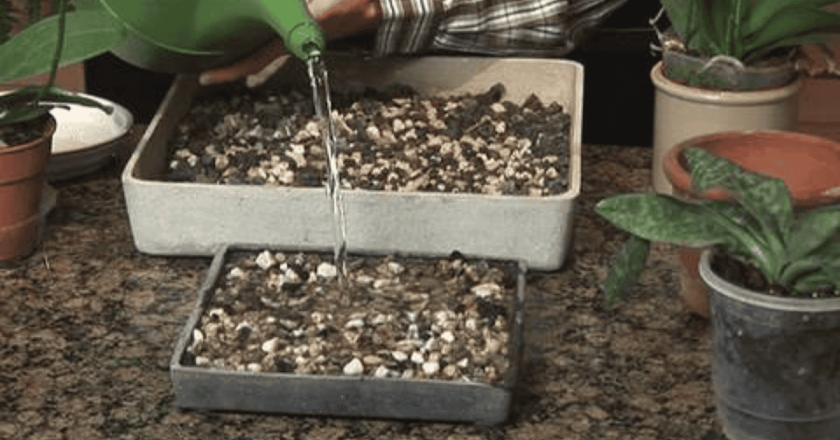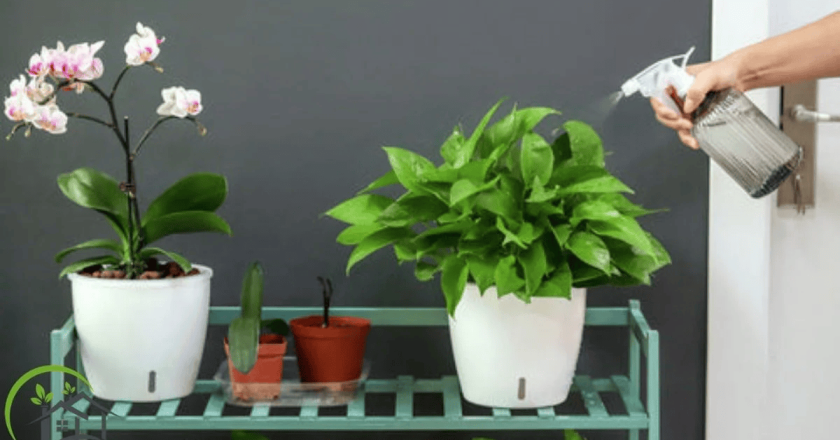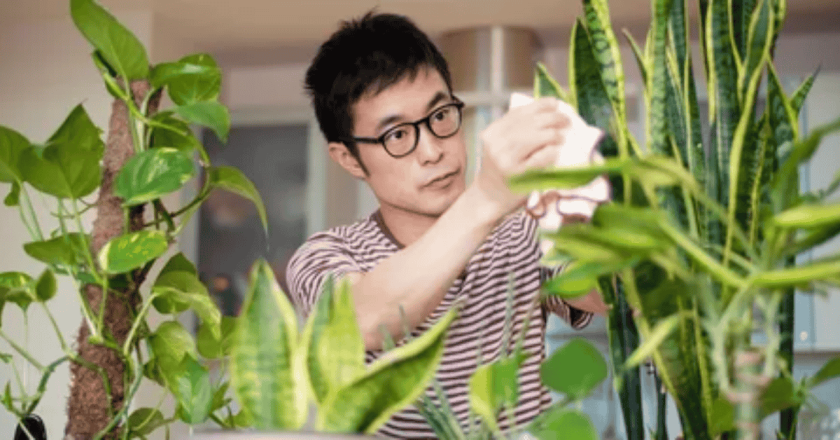Some people fill their homes with furniture, while others fill them with art. But for many of us, plants are what make a space feel alive. There’s something oddly grounding about having greenery around, and when you mix that with a touch of philosophy—like Feng Shui—it suddenly feels deeper than just “decor.”
And maybe that’s why the topic of Feng Shui Indoor Plants keeps coming up more than ever in 2025. We’re living in a time when balance is tricky to come by. Screens never switch off, the world moves faster than we’d like, and we search for ways to keep the energy in our homes calmer, more aligned. Plants—especially ones chosen with Feng Shui in mind—seem like one of the simplest, yet most meaningful, steps we can take.
I’ll admit, I was sceptical the first time I read about lucky indoor plants or a so-called Feng Shui money plant. It sounded like superstition. But then again, don’t most traditions start off sounding like that until you experience them? Over the years, the philosophy has fascinated me, not because I think a plant will magically drop wealth into my lap, but because it makes me more intentional about what I put in my space.
What Feng Shui Really Means for Plants
Before diving into the specific choices, it’s worth pausing for a moment. Feng Shui isn’t just “plant here, energy flows there.” At its core, it’s about harmony between people and their environment. Objects, shapes, and yes—even plants—carry symbolic meaning. When placed thoughtfully, they’re believed to influence health, wealth, and overall peace.
That’s where Feng Shui Indoor Plants come in. Unlike generic houseplants, they’re chosen not only for their looks or how easy they are to grow, but for what they represent. A feng shui bamboo plant, for example, has been tied to resilience and prosperity. A peace lily leans toward serenity and purification. And it’s not hard to see why these associations have lasted: even if you set aside the philosophy, the visual presence of a tall, elegant green plant instantly changes a room’s mood.
Why 2025 Feels Like the Year of Plant Energy
It might sound like a stretch, but I think 2025 is a year where people are more open to blending the practical and the symbolic. Minimalist living, decluttering, digital detoxing—all these trends show we want spaces that feel lighter, calmer. Adding feng shui plants to the home is like extending that mindset but giving it a cultural framework.
And honestly, I’ve noticed people getting more curious about indoor gardening in general. Articles like low-maintenance plants that thrive or oversized indoor plants are constantly circulating because we crave greenery that doesn’t overwhelm us with care routines. Feng Shui plants sit neatly within that demand. They look good, they feel meaningful, and many of them are relatively easy to care for.
Top Feng Shui Indoor Plants to Consider
Here’s where things get interesting. There’s not just one plant that “works.” Instead, you can choose depending on what you want to attract—wealth, calmness, harmony, or simply better energy flow. Let’s walk through some of the best Feng Shui plants that have stood out in both tradition and modern design.
1. Feng Shui Money Plant
The Feng Shui money plant (often called the jade plant or money tree) is probably the most famous. It’s tied closely to prosperity and abundance. Some swear that keeping it in the southeast corner of the home—the wealth area in Feng Shui—encourages financial growth.
If you’re interested in care specifics, here’s a detailed guide: How to care for a money tree. It’s not complicated, but it does require bright, indirect light and occasional pruning to stay lively.
2. Feng Shui Bamboo Plant
Another classic is the feng shui bamboo plant. Its strength lies in its symbolism: resilience, adaptability, and upright growth. It thrives in water or soil, and its hollow stems are said to let positive energy flow smoothly.
Placing bamboo in the east or southeast side of your home is common practice if you want it to support family growth or wealth.
3. Peace Lily
The peace lily is often recommended as one of the top indoor plants for positive energy. It symbolises peace, purification, and calm—no wonder it’s one of the most common choices for bedrooms. For care details, here’s a guide worth checking out: peace lily care tips.
4. Snake Plant
The snake plant might surprise people because it’s sharp and upright, not soft and flowing. But in Feng Shui, it’s tied to protective energy and can filter negativity. If you’re someone who struggles with keeping plants alive, this one is nearly indestructible. Here’s a practical guide: snake plant care tips.
5. Christmas Cactus
While not traditionally mentioned in Feng Shui, I’ve seen it adopted by some households as part of their feng shui indoor garden. Its blooming nature in winter brings vitality and colour into spaces that otherwise feel dull. Curious about how to care for it? Read: Christmas cactus guide.
Feng Shui Plants by Room
Placement matters as much as the plant itself. Here are some ways people incorporate feng shui plants for the bedroom, living room, and other spaces:
-
Living Room: This is where energy circulates most during the day. Feng Shui plants for the living room, like bamboo or money plants, create welcoming vibes for guests and support harmony.
-
Bedroom: Softer, calming plants like peace lilies or jasmine are best. They’re seen as feng shui plants for peace and rest, unlike sharper plants that might feel too harsh in a space for sleep.
-
Workspaces: If you’re setting up a home office, consider plants that boost productivity. A money tree here not only looks good on Zoom calls but also aligns with the symbolic desire for financial prosperity.
-
Bathrooms: A surprising yet growing trend is the incorporation of greenery in bathrooms. See the best plants for your bathroom. Ferns, pothos, and bamboo work well here, balancing out moisture-heavy environments.
Feng Shui Plant Arrangement and Flow
It’s not just which plants you choose, but how you arrange them. A clutter of greenery can block energy as much as it enhances it. A single tall plant in a corner might shift the feel of a room more than five smaller pots crammed on a shelf.
The idea of feng shui plant arrangement emphasises flow. For example, placing feng shui house plants in pairs can symbolise partnership and balance. A trio often represents a family. Too many different types might confuse the energy rather than harmonise it.
And yet, rules are flexible. I’ve seen people place a feng shui bamboo plant in kitchens—not traditional, but still fitting for them. It’s a reminder that while guidelines help, your own intuition should matter too.
Health and Well-Being: Plants Beyond Symbolism
Even if you strip away the Feng Shui philosophy, many of these plants contribute to air quality and mood. The best Feng Shui plants—like snake plants, peace lilies, and money trees—are also proven air purifiers.
It ties back to the idea of feng shui plants for health. A calmer environment, cleaner air, a touch of nature—these things matter. They might not be mystical, but they’re undeniably real. Studies have shown that indoor greenery can reduce stress and improve focus. Whether you call it science or Feng Shui energy, the outcome feels the same.
A Note on Prosperity and Luck
Many people approach Feng Shui with a wishful mindset. They want plants that act as magnets for money, peace, or luck. While I can’t promise any of that, there is something about intention that changes behaviour. Having a feng shui money plant in sight might remind you to save more. A feng shui bamboo plant might make you feel sturdier in your decisions.
So yes, feng shui plants for prosperity, feng shui plants for good luck, or even indoor plants for good luck—these phrases might sound mystical. But they carry weight because they affect how we think and act.
Creating Your Own Feng Shui Indoor Garden
One trend I’ve noticed is people curating entire corners or balconies into a feng shui indoor garden. It doesn’t have to be elaborate. Even a small grouping—bamboo for growth, peace lily for calm, and jade plant for wealth—creates a layered, symbolic setup.
It’s a little like choosing pieces for a capsule wardrobe. Each one does its job, but together they form something more cohesive.
If you’re just starting, I’d recommend no more than three or four plants. You can always add later once you see how the arrangement feels.
Looking Ahead: Feng Shui Plants in 2025
What makes Feng Shui Indoor Plants particularly timely in 2025? Perhaps it’s the shift in how people are viewing homes. They’re not just places to sleep anymore. They’re offices, sanctuaries, gyms, and everything in between. Energy management—whether spiritual, emotional, or psychological—becomes a priority.
Articles on low-maintenance outdoor plants or oversized indoor greenery aren’t just lifestyle fluff anymore. They’re practical guides for a generation that wants calm without clutter. Feng Shui plants slot neatly into that desire.
Key Takeaways
-
Feng Shui Indoor Plants combine beauty and meaning. They aren’t just decoration; they carry symbolism tied to harmony, wealth, and calm.
-
Placement is just as important as choice. A plant in the right corner—say, the southeast for prosperity—shapes how energy flows in your home.
-
Low-maintenance options exist. From the resilient feng shui bamboo plant to the nearly indestructible snake plant, there’s something for every lifestyle.
-
Intention matters. Having a feng shui money plant or peace lily nearby can act as a gentle reminder of the qualities you want to cultivate.
-
2025 feels like the perfect time. With homes doubling as work, rest, and creative spaces, plants that encourage balance are more relevant than ever.
Final Thought
Sometimes it’s less about whether Feng Shui Indoor Plants truly bring luck or wealth, and more about how they shift your perspective. A room with a touch of greenery feels different—lighter, calmer, somehow more complete. And if aligning your peace lily or bamboo with Feng Shui zones adds a layer of meaning? That only deepens the experience.
It’s not about chasing perfection or following every rule. It’s about choosing plants that feel right for you, arranging them thoughtfully, and letting them become part of your daily rhythm. In that sense, the positive energy isn’t mystical at all—it’s real, visible, and something you can feel each time you walk into the room.
FAQs
1. Which plant is considered the most powerful in Feng Shui?
The Feng Shui money plant is often seen as the strongest symbol of prosperity, though bamboo and peace lilies are equally popular for balance and peace.
2. Can I place Feng Shui plants in my bedroom?
Yes, but choose calming ones like the peace lily or jasmine. They’re known as feng shui plants for the bedroom because they encourage restful energy.
3. How do I know where to place plants for Feng Shui?
Traditionally, the southeast is for wealth, the east for family, and the north for career. That said, trust your intuition too—the arrangement should feel natural.
4. Do Feng Shui Indoor Plants require special care?
Not really. They follow the same basics: light, water, and occasional pruning. Guides like snake plant care or money tree tips can help.
5. Is it okay to mix regular houseplants with Feng Shui plants?
Of course. Many people blend feng shui house plants with other greenery. The goal is harmony, not rigid separation. If the mix feels good, it works.



